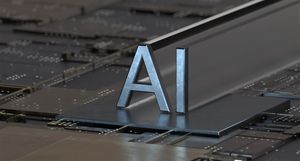
NVIDIA (NASDAQ: NVDA) continues to rewrite the rules of the artificial intelligence (AI) chip market, cementing its position as the undisputed leader amidst a technological gold rush. With the recent unveiling of its next-generation GPU architectures, Blackwell and the specialized Rubin CPX, the company is not merely participating in the AI revolution; it's actively engineering its very infrastructure. These innovations are the bedrock upon which NVIDIA's unprecedented trillion-dollar market capitalization has been built and expanded, solidifying its leadership as competitors scramble to keep pace.
The introduction of these cutting-edge chips ensures NVIDIA remains at the forefront of powering everything from sophisticated large language models (LLMs) to complex scientific simulations, further entrenching its comprehensive hardware and software ecosystem. This relentless pace of innovation, coupled with strategic market positioning, underscores why Wall Street continues to place immense confidence in NVIDIA's ability to drive the future of AI.
Engineering the Future: Blackwell and Rubin CPX Redefine AI Compute
NVIDIA's dominance is less about market capture and more about technological leadership, epitomized by its latest GPU architectures. The Blackwell platform, launched in March 2024 at GTC 2024, and the specialized Rubin CPX, announced on September 9, 2025, at the AI Infra Summit, represent significant leaps in AI computing capabilities.
The Blackwell architecture is a marvel of engineering, boasting 208 billion transistors on TSMC's custom 4NP process. Its dual-die design, connected by a 10 TB/s NV-HBI interface, enables seamless performance for multi-trillion-parameter models. Key features include Fifth-Generation Tensor Cores with new MXFP4 and MXFP6 formats, a Second-Generation Transformer Engine for LLM inference acceleration, and 18 NVLink connections providing 1.8 TB/s of bidirectional bandwidth per GPU. Performance-wise, Blackwell's B200 GPU is up to 57% faster for training than its Hopper predecessor, while the GB200 NVL72 cluster offers a staggering 30x faster real-time inference compared to H100 clusters, all with a 10x improvement in token-per-watt efficiency.
Building on this, the Rubin CPX is a specialized accelerator within the forthcoming Rubin family, set for late 2026 availability. It is meticulously designed for massive-context AI models, capable of handling over one million tokens. Unlike Blackwell's dual-die, Rubin CPX features a cost-optimized, monolithic design, delivering 30 PetaFLOPS of NVFP4 compute performance and 128 GB of GDDR7 memory. Its integrated multimedia encoders streamline workflows, and its Vera Rubin NVL144 CPX platform combines 144 Rubin CPX GPUs with traditional Rubin GPUs and Vera CPUs for an aggregate 8 ExaFLOPS of NVFP4 compute. Crucially, Rubin CPX offers three times the attention processing speed of the GB300 Blackwell Ultra and is optimized for "disaggregated inference," significantly boosting efficiency for long-context AI workloads.
This consistent unveiling of advanced architectures has directly fueled NVIDIA's meteoric financial rise. The company achieved a $1 trillion valuation in 2023, rapidly surpassed $2 trillion by March 2024, and briefly hit an unprecedented $4 trillion market capitalization on July 10, 2025. This growth is underpinned by an estimated 80-90% market share in AI chips and a projected fiscal 2025 revenue of $130.5 billion. Beyond hardware, NVIDIA's comprehensive CUDA software ecosystem provides a powerful "lock-in effect," making it the industry standard and further entrenching its leadership. Demand for both Blackwell and Hopper GPUs has been "extraordinary," reportedly "sold out through 2025," signaling a robust immediate future. The announcement of Rubin CPX is viewed as a "powerful market signal" that NVIDIA is committed to future-proofing its AI infrastructure dominance.
A Shifting Landscape: Winners and Challengers in the AI Arms Race
NVIDIA's unparalleled success has carved a clear divide between beneficiaries and formidable challengers within the AI chip industry.
The most prominent winner is, undoubtedly, NVIDIA Corporation (NASDAQ: NVDA) itself. Its stock surge, robust financial performance driven by data center segment growth, and technological leadership with Blackwell and Rubin CPX solidify its position as the essential infrastructure provider for the AI revolution. Indirect winners include Taiwan Semiconductor Manufacturing Company (TSMC), NVIDIA's primary contract manufacturer, which benefits immensely from the surging demand for its fabrication services. System integrators and NVIDIA partners across the globe also thrive by building and deploying solutions around NVIDIA's powerful hardware and software.
However, NVIDIA's dominance also spurs intense competition. Advanced Micro Devices (NASDAQ: AMD) is NVIDIA's primary traditional GPU competitor, aggressively developing its Instinct MI series accelerators like the MI300X. AMD aims to offer competitive performance at potentially lower costs and is building out its ROCm software ecosystem to challenge CUDA. Despite gaining traction, AMD remains a distant second, holding less than 10% market share in AI GPUs. Similarly, Intel Corporation (NASDAQ: INTC), a CPU giant, is making a strong push into AI with its Gaudi processors. Intel positions its Gaudi 3 as a potentially 50% cheaper alternative to NVIDIA's H100, targeting cost-conscious enterprises for LLM training. However, Intel has struggled to gain significant market share in high-end AI training.
A more significant challenge comes from major Cloud Providers/Hyperscalers who are increasingly developing their own custom AI chips. Companies like Google (NASDAQ: GOOGL) with its Tensor Processing Units (TPUs), Amazon (NASDAQ: AMZN) with Trainium and Inferentia, and Microsoft (NASDAQ: MSFT) with its Azure Maia AI accelerator and Cobalt CPU, are investing heavily in custom silicon. This strategic shift towards vertical integration aims to reduce costs, improve efficiency, and gain independence from NVIDIA's vendor lock-in. For instance, Microsoft's Maia 100 was co-created with OpenAI, and Amazon's significant investment in Anthropic includes a stipulation that its future AI models will run on Amazon's custom chips. These custom chips are optimized for specific internal workloads, potentially eroding NVIDIA's market share in specialized segments, though they often struggle to match NVIDIA's general-purpose capabilities. Even Meta Platforms (NASDAQ: META) unveiled its second-generation MTIA chips for inference, and OpenAI is exploring its own AI chips, partnering with Broadcom (NASDAQ: AVGO) for custom silicon.
Reshaping the AI Landscape: Broad Implications and Historical Echoes
NVIDIA's pervasive dominance in the AI chip market carries profound implications, aligning with broader industry trends, creating ripple effects across the tech ecosystem, and drawing increasing regulatory scrutiny.
Its market leadership, with estimates ranging from 70% to 95% in AI accelerators, is inextricably linked to the generative AI boom and the escalating demand for high-performance computing (HPC). NVIDIA's GPUs, particularly the A100, H100, and Blackwell, have become the de facto standard for training LLMs. The company's early investment and development of its CUDA software platform have provided a "one-stop shop" for AI development, making it an indispensable partner for AI research and commercialization. This has cemented NVIDIA's role as the undisputed leader in the global race for AI supremacy, enabling accelerated scientific discoveries and complex simulations.
The ripple effects are widespread. For competitors, NVIDIA's formidable lead and the CUDA ecosystem pose significant challenges, creating high switching costs. While AMD and Intel are pushing alternative hardware and software (ROCm), the deeply entrenched NVIDIA platform makes it an uphill battle. For partners, particularly cloud providers like Microsoft Azure (NASDAQ: MSFT) and Google Cloud (NASDAQ: GOOGL), there's a dual dynamic: immense reliance on NVIDIA's GPUs for their AI infrastructure, coupled with a growing push towards developing custom silicon to reduce dependence and optimize for their specific workloads. This could lead to a future where NVIDIA's general-purpose GPUs power foundational AI, while hyperscalers use custom chips for niche, high-volume tasks. The overall technology ecosystem benefits from NVIDIA's acceleration of innovation, making large-scale AI more accessible. However, the high demand and premium pricing for NVIDIA's chips also mean AI development can be expensive, driving some developers to explore more cost-effective alternatives.
The immense market concentration has not gone unnoticed by regulators. Both the U.S. Department of Justice (DOJ) and French regulators have initiated antitrust investigations into NVIDIA, probing allegations of anticompetitive practices, such as promoting exclusive use of its chips, prioritizing certain customers, and illegal tying agreements. Furthermore, U.S. export restrictions on advanced chips to China have forced NVIDIA to modify its products for that market, impacting sales and incentivizing China to accelerate its domestic semiconductor industry.
Historically, NVIDIA's situation echoes that of other tech giants. Intel's (NASDAQ: INTC) long-standing dominance in the x86 CPU market and Microsoft's (NASDAQ: MSFT) overwhelming market share with Windows both led to extensive antitrust investigations. In both cases, regulators scrutinized how the dominant player leveraged its core product to disadvantage competitors in adjacent markets. NVIDIA's CUDA ecosystem, which creates a "walled garden" around its hardware, is seen by some critics as a similar mechanism, making it difficult for alternative hardware and software platforms to gain traction.
The Road Ahead: Navigating Evolution and Opportunity
The future for NVIDIA and the broader AI chip market promises continued dynamism, marked by both immense opportunity and increasing complexity.
In the short-term, NVIDIA is poised to maintain its robust growth, with its Blackwell and Hopper GPUs reportedly sold out through 2025. The company's data center revenue continues its upward trajectory, and analysts project significant revenue growth for the coming year. NVIDIA's immediate strategy involves meeting this surging demand while navigating geopolitical restrictions, particularly in China, where it has developed region-specific chips like the H20 and B30A.
Long-term, NVIDIA's roadmap is ambitious, with CEO Jensen Huang forecasting a $3 trillion to $4 trillion AI infrastructure opportunity over the next five years. This will be addressed by subsequent architectures like Rubin and Rubin Ultra, designed for even more complex, multi-modal AI tasks, including video generation and code. NVIDIA is also strategically investing in "agentic AI" for humanoid robots and autonomous vehicles, and expanding collaborations, such as with General Motors (NYSE: GM).
However, strategic pivots and adaptations will be crucial for all players. NVIDIA will continue to leverage its CUDA ecosystem as a powerful moat, while also exploring "NVLink Fusion" to allow hyperscalers to integrate custom XPUs within its rack-scale systems. Its competitors are adapting by offering competitive hardware, often at lower price points (e.g., Intel's Gaudi 3), and developing open-source software ecosystems like AMD's ROCm to challenge CUDA's lock-in. The most significant adaptation is by hyperscalers like Google, Amazon, and Microsoft, who are doubling down on custom AI chip development to reduce costs, optimize performance, and lessen reliance on NVIDIA. This trend suggests an emerging equilibrium where NVIDIA may lead in general-purpose AI compute, while big tech excels in specialized cloud-native AI delivery.
Emerging market opportunities include the expanding adoption of AI across all sectors, from healthcare to robotics, and the growth of Edge AI and AIoT. The massive investments in AI data centers, projected to reach trillions of dollars, represent a huge market for chip providers. However, challenges include high R&D costs, persistent supply chain issues, the immense energy consumption of AI, and growing ethical and regulatory considerations.
Potential scenarios and outcomes include NVIDIA maintaining its leadership by continually innovating and diversifying, even if its market share slightly decreases due to custom chips and competitors. Alternatively, the market could become more fragmented, with hyperscalers relying on custom silicon for bulk workloads, while enterprises choose a mix of chips based on specific requirements. Increased geopolitical bifurcation, driven by U.S.-China tensions, could also lead to distinct, less integrated markets. Ultimately, NVIDIA's CUDA software ecosystem could prove to be its most enduring advantage, making it difficult for customers to switch even in a more hardware-diverse environment. Regulatory scrutiny, including antitrust probes from the U.S. DOJ and European authorities, adds another layer of complexity, potentially leading to interventions that reshape market dynamics.
Conclusion: A New Era of Computing, Powered by AI Architects
NVIDIA's journey from a graphics card pioneer to the undisputed architect of the AI era is a testament to its visionary leadership and relentless innovation. The introduction of Blackwell and the specialized Rubin CPX architectures are not merely product launches; they are foundational pillars for the next wave of AI advancements, solidifying NVIDIA's market dominance and pushing its valuation to unprecedented heights.
The market moving forward will be characterized by a fascinating interplay of collaboration and fierce competition. While NVIDIA's comprehensive ecosystem, particularly CUDA, provides a powerful moat, the rise of custom AI chips from hyperscalers like Google (NASDAQ: GOOGL), Amazon (NASDAQ: AMZN), and Microsoft (NASDAQ: MSFT), alongside aggressive moves from traditional rivals like AMD (NASDAQ: AMD) and Intel (NASDAQ: INTC), will undoubtedly intensify the battle for market share. This increased competition, coupled with growing regulatory scrutiny from antitrust bodies and the complexities of global trade policies, presents both challenges and opportunities for all players.
For investors, the key takeaway is NVIDIA's enduring strategic importance in the global AI landscape. Its continuous innovation and robust ecosystem make it a long-term play in the burgeoning AI infrastructure market. However, investors should also closely watch for the effectiveness of competitors' alternative solutions, the pace of custom chip adoption by hyperscalers, and the outcomes of regulatory investigations, which could introduce new market dynamics. The coming months will reveal how NVIDIA adapts to these evolving forces, but one thing remains clear: the AI revolution is here to stay, and NVIDIA (NASDAQ: NVDA) remains firmly at its helm.






